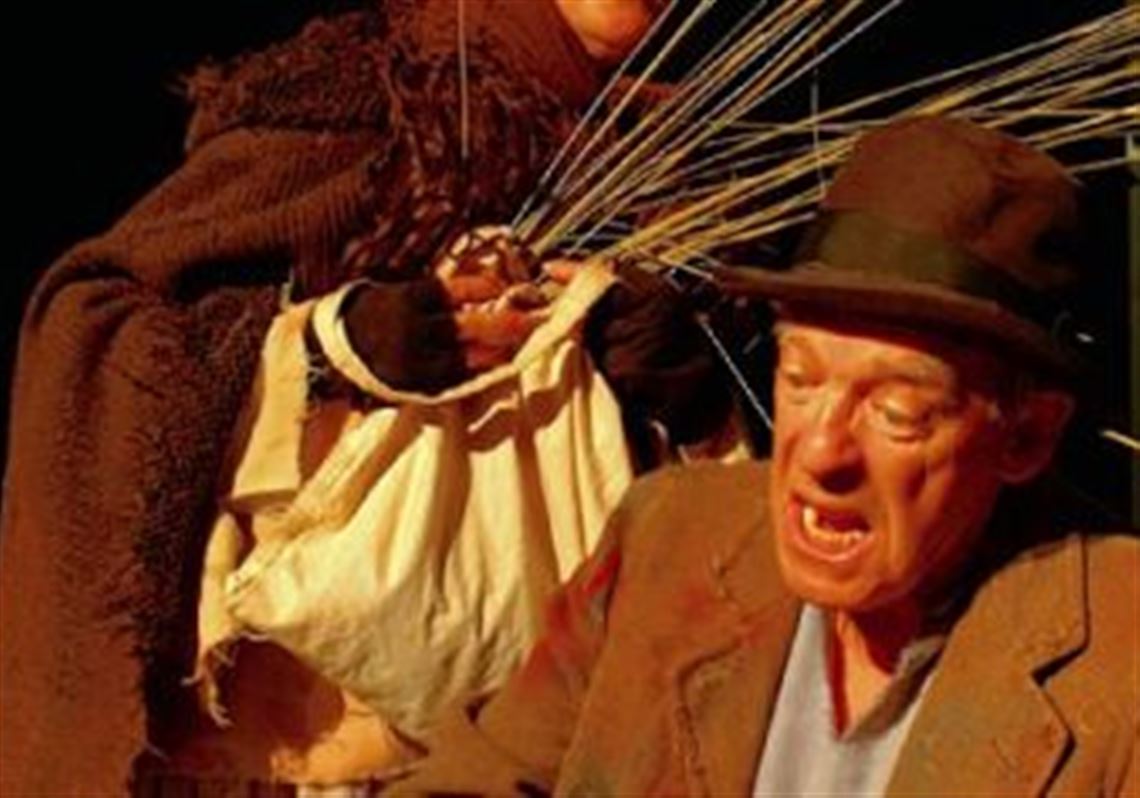The stony fields of the west of Ireland are layered with history, human and mythic. So a pile of rocks in a field is as likely to be the remains of a medieval monk's cell or Viking fort as a fairy ring or collapsed cow shed -- or possibly all five in succession.
That's how it is with the plays of John Millington Synge (1871-1909), who made the drama of the Irish countryside a seminal force in the heightened naturalism of the 20th century. There he found the colorful settings and characters for his six shorter plays that join with "The Playboy of the Western World" to create what Pittsburgh Irish & Classical Theatre calls its Synge Cycle.
He also found there some of his stories, as in "Riders to the Sea" (1904), his taut, short tragedy of the precarious life of the sea-going inhabitants of the isolated Aran Islands.
- Where: Charity Randall Theatre, Stephen Foster Memorial, Pitt.
- When: 8 p.m. tonight and Aug. 8; 2 p.m. Aug. 3 and 17.
- Tickets: $20 (25 and under, $17); all three two-play programs for $50.
- More information: 412-394-3353, proartstickets.org or picttheatre.org.
There, the Dublin-bred, Protestant, middle-class Synge went for five summers to experience the Irish soul, and in 1901 he wrote a book of essays about island life, "The Aran Islands" (published 1907). The interlocking stories of death and stoic acceptance in "Riders" are already there, along with Synge's insight into the pre-Christian superstitions that weave through peasant life.
But Synge wasn't above finding his stories elsewhere, as with "The Well of the Saints" (1905), the contrasting comedy that joins "Riders" to make up Program A in PICT's Cycle. As explained in the fine program notes by dramaturg Ellen Mease, the source is a late medieval French farce, "The Blindman and the Cripple" -- also the source for Samuel Beckett's "Rough for Theatre I."
But it's Synge's genius and lilting Anglo-Irish prose that make any story seem utterly at home. His language is a created artifact, too, rising, just like those rocks in those fields, into the architecture of cell, fort or cow shed.
Under the direction of Sheila McKenna, "Riders" scores visually, first and last. It begins with the eldest daughter (Derdriu Ring) pounding dough, wielding iron knife and pot, piling turf and spinning wool, while we hear gulls scream and waves surge -- an image of the eternal fates at work. And it ends in a sculptural tableau, with a body prepared for burial as the stoic islanders stand against a gradually darkening sky and the waves pound like the sledgehammers of the gods.
In between, the half-hour story moves quickly. The matriarch, Maurya (Kate Young), who has already buried a husband and four sons, waits for word of a fifth, while the sixth and last heads off precipitously to his own fate. Yet the play allows for a grim humor -- "there's a power of young men floating around in the sea," someone notes. And in a dour landscape, the brilliant red of petticoats, keening shawls and winding sheet are both shocking emblems of death and assertions of life lived on the brink.
Maurya is an impossible role, a monster of grief for whom Young's arch eccentricity isn't the best fit. But "Riders" isn't about individuals. It's a ritual of loss and grief in an elemental world.
Martin Giles directs the rambunctious "Well of the Saints," a comedy with a serious lesson about the power of imagination. Martin and Mary Doul are an elderly blind couple, begging their way through the west. (The parallels to Beckett are vivid.) At the end of Scene 1, they're given sight by a pedantic holy man wielding water from a saints' well.
Discovering they aren't the beauties they had imagined and taunted by the villagers (echoes of "King Lear," here), they separate. No longer objects of charity, they go unwillingly to work. That's Scene 2. In Scene 3, their blindness returns and they're threatened again with the holy man's cure, which this time would be permanent. The ending they choose is part comic, part brave acceptance of their lot.
Here, Young's eccentricity is a perfect embodiment of blind Mary, and she is masterfully matched by the Martin of Jon Farris, an Ohio actor with national credits making his PICT debut. Kevin Murphy is rather young for Tim the smith, but Laura Lee Mixon is a proper surly spitfire as pretty Molly Byrne.
What rich language! One of my favorite tag lines from "Well of the Saints" is, "You're a cute-thinking woman." Well, he's a cute-thinking playwright.
First Published: July 31, 2008, 8:00 a.m.


















